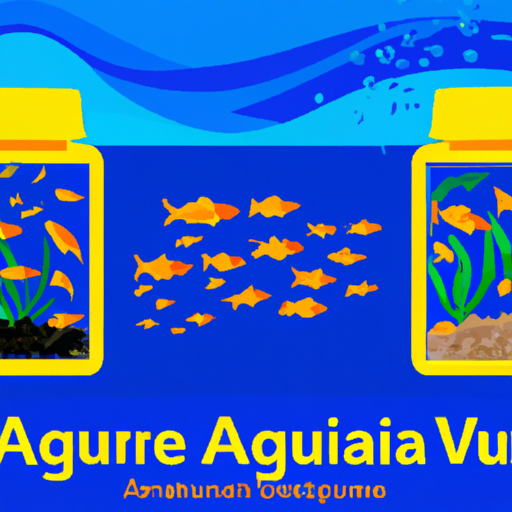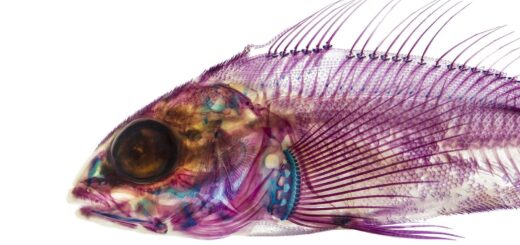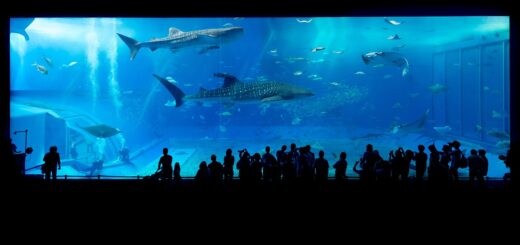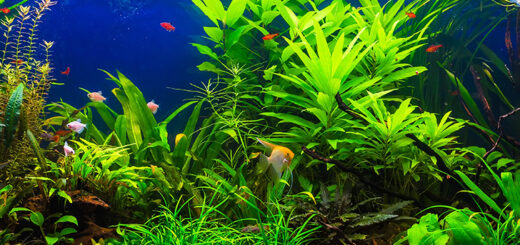Aquarium Cycling: Understanding The Nitrogen Cycle For A Healthy Fish Tank
In “Aquarium Cycling: Understanding the Nitrogen Cycle for a Healthy Fish Tank,” you will learn about the crucial process of aquarium cycling, which is essential for maintaining a thriving and healthy fish tank. By understanding the nitrogen cycle and its importance in maintaining water quality, you will be equipped with the knowledge and tools needed to create an optimal environment for your aquatic pets. Whether you are a novice or experienced fish owner, this article will provide valuable insights on how to keep your fish happy and healthy.
What is Aquarium Cycling?
Definition of Aquarium Cycling
Aquarium cycling refers to the process of establishing and maintaining a healthy aquatic environment in a fish tank. It is an essential step in setting up a new aquarium or introducing new fish to an existing one. During this process, beneficial bacteria colonize the tank, converting toxic waste produced by fish and decaying matter into less harmful substances. This biological filtration system is known as the nitrogen cycle.
Importance of Aquarium Cycling
Aquarium cycling is crucial for the overall well-being and longevity of your fish. The nitrogen cycle provides a natural and efficient way to remove toxic ammonia and nitrite from the aquarium, preventing the build-up of harmful substances that can be fatal to fish. By understanding and implementing proper aquarium cycling techniques, you can create a stable and healthy environment for your aquatic pets.
The Nitrogen Cycle
Overview of the Nitrogen Cycle
The nitrogen cycle is a biological process that occurs in every aquarium. It involves the conversion of toxic ammonia, produced by fish waste and decaying matter, into less harmful nitrite and eventually into nitrate. This process is carried out by beneficial bacteria, which form colonies in the aquarium and act as natural filters. The nitrogen cycle is essential for maintaining water quality and ensuring the well-being of fish.
Stages of the Nitrogen Cycle
The nitrogen cycle can be divided into several stages. The first stage is the introduction of ammonia into the aquarium, either through fish waste or an ammonia source. This ammonia acts as a food source for beneficial bacteria, which begin to colonize the tank during the second stage known as the ammonia-oxidizing bacteria stage. These bacteria convert ammonia into nitrite.
During the third stage, called the nitrite-oxidizing bacteria stage, a different group of beneficial bacteria convert nitrite into nitrate, which is relatively harmless to fish in low concentrations. The final stage of the nitrogen cycle involves the removal of nitrate through regular water changes and the growth of live plants in the aquarium.
Establishing and Maintaining a Healthy Fish Tank
Preparing the Tank
Before beginning the cycling process, it is important to ensure that your fish tank is properly set up. Start by thoroughly cleaning the tank, removing any dirt or contaminants. Rinse any gravel or substrate you plan to add and arrange it in the tank. Install the necessary filtration system and ensure it is functioning properly. Lastly, add conditioned water to the tank, using a dechlorinator to remove any chlorine or chloramine.
Adding Fish and Ammonia Source
To initiate the cycling process, you will need to introduce a source of ammonia into the tank. One common method is adding a small number of hardy fish, such as zebra danios or guppies. These fish produce waste that will generate ammonia, kick-starting the nitrogen cycle. Alternatively, you can use an ammonia solution or pure ammonia drops specifically designed for aquarium use. Follow the instructions provided to add the appropriate amount.
Monitoring Water Parameters
During the aquarium cycling process, it is essential to regularly monitor the water parameters to ensure the nitrogen cycle is progressing correctly. Test kits are available for measuring ammonia, nitrite, and nitrate levels in the water. Ammonia and nitrite levels should be regularly checked, and the goal is to see a decline in both as the beneficial bacteria establish in the tank. Nitrate levels should also be monitored, as high levels can indicate the need for a water change.
Choosing the Right Fish for Cycling
How to Select Fish for Cycling
When choosing fish for the cycling process, it is important to select species that are hardy and can withstand the fluctuating water conditions that occur during the nitrogen cycle. Avoid delicate or sensitive fish, as they may not survive the cycling process. Opt for small, inexpensive fish that can tolerate higher ammonia and nitrite levels. Researching the specific requirements and characteristics of different fish species will help you make an informed decision.
Recommended Fish for Cycling
Some recommended fish species for cycling include zebra danios, guppies, platies, and white cloud mountain minnows. These fish species are known for their resilience and ability to endure the initial cycling phase. They can tolerate higher levels of ammonia and nitrite, making them ideal for kick-starting the nitrogen cycle in your aquarium. However, always consider the appropriate tank size and compatibility when selecting fish for your aquarium.
Cycling Methods
Fishless Cycling
Fishless cycling is a method of cycling an aquarium without using live fish. This approach eliminates the risk of harm to fish during the cycling process. Instead of fish, a source of pure ammonia or ammonium chloride is added to the tank to provide the necessary ammonia for the beneficial bacteria to establish. Fish food or decaying organic matter can also be used as an ammonia source. This method allows for better control of ammonia levels and is recommended for beginners or those concerned about the well-being of fish.
Fish-In Cycling
Fish-in cycling involves using live fish to initiate the cycling process. This method is often faster than fishless cycling but carries a higher risk to the fish involved. It is crucial to carefully monitor ammonia and nitrite levels during fish-in cycling and be prepared to take immediate action if levels become harmful to the fish. Regular water changes and close observation of the fish’s behavior and health are necessary to ensure their well-being during this process.
The Role of Beneficial Bacteria
Understanding Beneficial Bacteria
Beneficial bacteria play a vital role in the nitrogen cycle and the overall health of your aquarium. Ammonia-oxidizing bacteria convert toxic ammonia into nitrite, while nitrite-oxidizing bacteria convert nitrite into nitrate. These bacteria form colonies on various surfaces in the aquarium, such as the filter media, substrate, and decorations. They serve as a natural filtration system, breaking down waste and maintaining water quality.
Cultivating Beneficial Bacteria
To cultivate beneficial bacteria in your aquarium, you need to provide them with a suitable environment to thrive. One way to promote their growth is by ensuring the aquarium is well-aerated, as these bacteria require oxygen to function properly. Another method is to choose a high-quality biological filtration system that provides ample surface area for bacterial colonization. Avoid using harsh chemicals or antibiotics in the tank, as they can harm or kill the beneficial bacteria.
Testing Water Parameters
Ammonia Testing
Regular ammonia testing is crucial during the cycling process. Ammonia levels should be monitored to ensure they are decreasing over time. Test kits are available, which utilize either liquid reagents or test strips to measure ammonia concentration. Follow the instructions provided with the test kit to obtain accurate readings. Ideally, ammonia levels should drop to zero before introducing more sensitive fish species to the aquarium.
Nitrite Testing
Nitrite testing is another essential aspect of monitoring water parameters during the cycling process. Nitrite levels should be regularly measured to ensure they are decreasing as the nitrogen cycle progresses. Test kits specifically designed to measure nitrite are available and should be used according to the instructions provided. It is important to note that high nitrite levels can be extremely toxic to fish and should be addressed promptly through water changes.
Nitrate Testing
Once the nitrogen cycle has matured, nitrate testing becomes important to maintain water quality. Nitrate levels should be checked regularly, as excessive nitrate can lead to poor fish health and algae growth. Test kits designed for measuring nitrate concentration can be used to determine the levels in your aquarium. If nitrate levels become too high, regular water changes and the addition of live plants can help reduce them.
Water Changes and Maintenance
Importance of Regular Water Changes
Regular water changes are essential for maintaining a healthy fish tank. They help remove accumulated nitrate, waste, and other contaminants to prevent water quality issues. Water changes also replenish essential minerals and trace elements that may be depleted over time. Aim to perform a partial water change of around 25% every one to two weeks, depending on the fish stocking level and the specific needs of your aquarium.
Proper Maintenance Routine
In addition to regular water changes, maintaining a proper routine can contribute to the overall health of your fish tank. Clean the glass of your aquarium regularly to remove algae and debris. Trim any dead or decaying plant matter to prevent the release of excess organic waste. Rinse the filter media periodically to remove accumulated debris and prevent clogging. By implementing a consistent maintenance routine, you can create a clean and habitable environment for your fish.
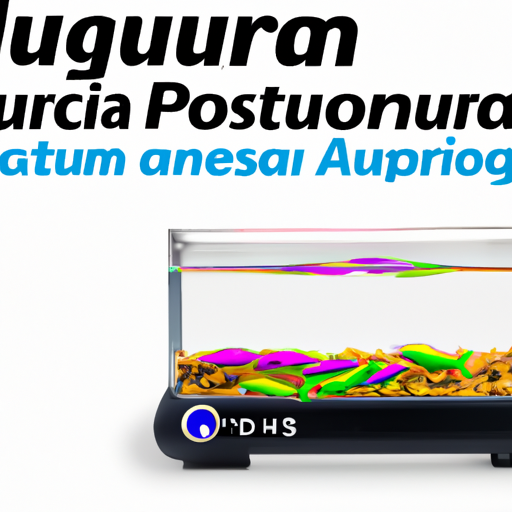
Common Issues and Troubleshooting
Ammonia Spikes
Ammonia spikes can occur during the early stages of the nitrogen cycle or if the cycling process is disrupted. High levels of ammonia can be toxic to fish, leading to stress, illness, or even death. To address ammonia spikes, perform a water change to dilute the concentration of ammonia in the tank. Ensure that the source of ammonia, such as fish waste or ammonia solution, is properly regulated, and consider temporarily removing or relocating sensitive fish species until ammonia levels stabilize.
Nitrite Spikes
Nitrite spikes, similar to ammonia spikes, can pose a serious threat to the health of your fish. Nitrite is highly toxic and negatively affects fish respiration and overall well-being. If nitrite levels become elevated, perform a water change to reduce the concentration. Avoid adding additional fish until nitrite levels have returned to safe levels. Monitor the fish closely for any signs of distress, such as gasping for air or erratic behavior.
Delayed Cycling
In some cases, the aquarium cycling process may take longer than expected. This can occur due to a variety of factors, such as inadequate colonization of beneficial bacteria or incorrect cycling methods. If you notice delays in the nitrogen cycle, review your tank setup, water parameters, and cycling techniques to identify any potential issues. It may be necessary to restart the cycling process or seek advice from experienced aquarium hobbyists or professionals.
Conclusion
Understanding and implementing proper aquarium cycling techniques is essential for maintaining a healthy and thriving fish tank. The nitrogen cycle, with its various stages and the role of beneficial bacteria, forms the foundation of aquarium cycling. By preparing the tank, monitoring water parameters, and choosing the right fish and cycling method, you can create a stable and safe environment for your aquatic pets. Regular water changes, maintenance, and troubleshooting are also important aspects of ensuring the long-term health and well-being of your fish. With proper care and attention, you can enjoy the beauty of a flourishing aquarium and the fascinating world of aquatic life.
